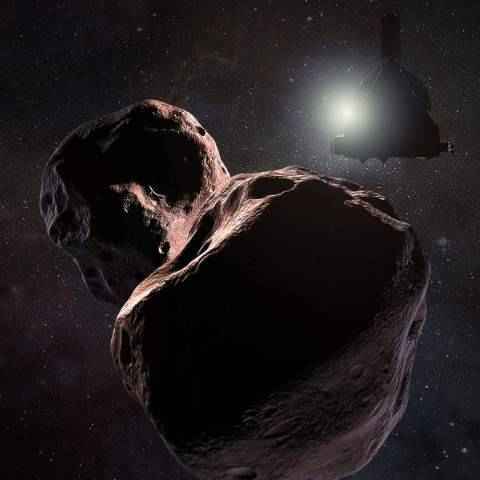NASA teams up with SpaceX to pulverise asteroid moon in 2022
NASA plans to destroy "potentially hazardous" asteroid moon in 2022.
SpaceX to provide launch services for the $69 million mission.

In a move you would probably find only in science fiction movies, NASA has teamed up with SpaceX to go destroy an asteroid moon in late 2022. The asteroid whose moon will be destroyed is called Didymos. According to NASA’s news release on the matter, SpaceX will provide launch services for the agency’s Double Asteroid Redirection Test (DART) mission, which involves sending a spacecraft deep into space to collide with an asteroid moon at high speed—a technique apparently known as a kinetic impactor.
 Survey
SurveyThe DART mission, which is due to start in June 2021, is the first of its kind and will be undertaken to demonstrate the ability to deflect an asteroid by colliding a spacecraft with it. According to NASA, the mission will set the agency back by approximately $69 million. In June 2021, the DART spacecraft is expected to be launched on a SpaceX-provided Falcon 9 rocket from Space Launch Complex 4E at Vandenberg Air Force in California.
NASA explains in its Planetary Defense site that DART will travel into space using solar propulsion and intercept with Didymos’ tiny moon in October 2022. At that point, the asteroid will be 11 million kilometres from Earth. It will then perform a high-speed collision to destroy the asteroid moon, destroying itself in the process. The speed at the time of collision is expected to be 6 kilometres per second. Navigation will be done with the help of an onboard camera and a sophisticated autonomous navigation software.
First discovered in 1996 by Joe Montani and known to be heading towards Earth progressively, Didymos has been classified as a “potentially hazardous asteroid”. While Didymos spans 800 metres across, its moon, or “secondary body”, spans 150 metres across. NASA believes this size is more typical of the size of asteroids that could cause a more common hazard to our planet. In comparison, DART will measure 12.5 metres across with its Roll Out Solar Array (ROSA) panels extended and fully deployed.
Vignesh Giridharan
Progressively identifies more with the term ‘legacy device’ as time marches on. View Full Profile